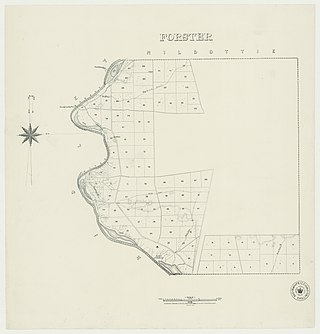
The Mid Murray Council is a local government area in South Australia in the Murray and Mallee region of South Australia. The council spans the area from the Riverland through the Murraylands to the eastern slopes of the Mount Lofty Ranges. It includes 220 km of the Murray River. The council seat is at Mannum; it also maintains secondary offices at Cambrai and Morgan.

The District Council of Karoonda East Murray is a local government area in the Murray Mallee area of South Australia. The main council offices are in Karoonda.
The Murray Mallee is the grain-growing and sheep-farming area of South Australia. It is bounded to the north and west by the Murray River, called the "River Murray" in South Australia, to the east by the Victorian border, and extending about 50 km south of the Mallee Highway.

The District Council of Loxton Waikerie is a local government area in the Murray Mallee region of South Australia. The council seat lies at Loxton, while it maintains a branch office at Waikerie.
Nildottie is a locality in the Australian state of South Australia located on the east side of the Murray River about 99 kilometres (62 mi) east of the state capital of Adelaide and about 40 kilometres (25 mi) north-east of the municipal seat in Mannum.
The District Council of Loxton was a local government area in South Australia from 1910 to 1997, centring on the town of Loxton.
Copeville is a town and a locality in the Australian state of South Australia.

Moorook is a town and locality in Australian state of South Australia. It is part of a series of towns surrounding lakes in the Riverland region in Australia. At the 2016 census, Moorook had a population of 189.
Mantung is a town and a locality in the Australian state of South Australia located in the state's south-east about 140 kilometres (87 mi) east of the state capital of Adelaide, and about 58 kilometres (36 mi) north-east and about 48 kilometres (30 mi) south-west respectively of the municipal seats of Karoonda and Loxton.

The District Council of Morgan was a local government area in South Australia from 1888 to 1997, centring on the town of Morgan.
The District Council of Ridley was a local government area in South Australia from 1976 to 1991.
The Hundred of the Murray was a cadastral hundred in South Australia spanning land two miles either side of the navigable portion of the Murray River in the 1850s and 1860s.

The Hundred of Forster, formerly the hundreds of Giles and Morphett, is a cadastral hundred in the County of Albert, South Australia.
The District Council of Swan Reach was a local government area in the Murraylands of South Australia from 1888 to 1933.
Mercunda is a town and a locality in the Australian state of South Australia located in the state's south-east about 134 kilometres (83 mi) east of the state capital of Adelaide, and about 52 kilometres (32 mi) north-east and about 53 kilometres (33 mi) south-west respectively of the municipal seats of Karoonda and Loxton.
The River News was a weekly newspaper published in Waikerie, South Australia, published from July 1956 until April 2020.
The County of Alfred is one of the 49 cadastral counties of South Australia on the south banks of the River Murray. It was proclaimed by Governor James Fergusson in 1868 and named for Prince Alfred, second son of Queen Victoria, who visited the state in 1867.

John Percival Jennings was an Australian horticulturalist who was a senior adviser for the South Australian Department of Agriculture.








